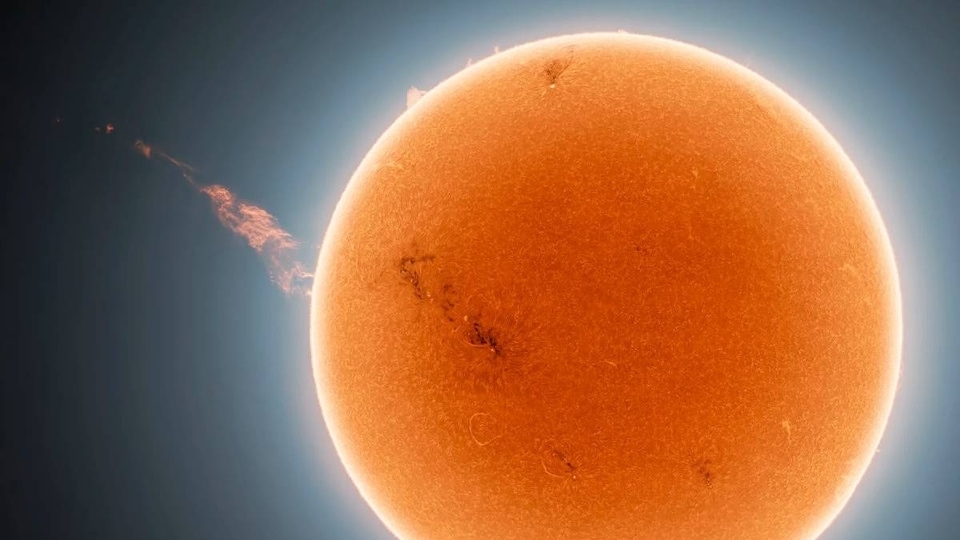24-Hour solar monitoring essential to catch CME, says Scientist ahead of Aditya-L1 mission
Ahead of Aditya-L1 mission, a scientist highlights the need for uninterrupted solar monitoring to study solar quakes and their potential impact on Earth's geomagnetic fields.

Dr. R Ramesh of the Indian Institute of Astrophysics emphasizes the need for round-the-clock solar observation as the Aditya-L1 mission readies for launch on Saturday morning. Solar quakes, known as Coronal Mass Ejections (CMEs), can disrupt Earth's systems, making continuous monitoring crucial.
1. Ahead of the Aditya-L1 solar mission, Dr. R Ramesh, a scientist from the Indian Institute of Astrophysics (IIA), emphasizes the need for continuous 24-hour monitoring of the Sun to study solar quakes that can affect Earth's geomagnetic fields.
2. The Aditya-L1 mission, dedicated to studying the Sun, is scheduled to launch from the Sriharikota spaceport on Saturday at 11:50 am.
3. Dr. Ramesh compares solar quakes, known as Coronal Mass Ejections (CMEs), to earthquakes on Earth. CMEs involve the ejection of massive amounts of solar materials into interplanetary space.
4. Some CMEs can travel at speeds of approximately 3,000 km per second and, in some cases, may be directed towards Earth, reaching near-Earth space in about 15 hours.
5. The Aditya-L1 mission offers a unique advantage as it allows observation of the solar corona from a vantage point close to its origin and enables the study of magnetic field changes in the solar atmosphere, which trigger CMEs or solar quakes.
6. CMEs pose a threat to satellites as they can disrupt electronics onboard and even lead to power outages on Earth. Instances of such disruptions include the 1989 power outage in Quebec, Canada, and the 2017 impact on Zurich Airport in Switzerland.
7. Once CMEs reach Earth, they interact with the planet's geomagnetic field, potentially affecting high-voltage transformers, making continuous solar monitoring crucial.
8. Aditya-L1's placement at the Lagrangian-1 (L1) point, 1.5 million km from Earth between the Sun and Earth, enables uninterrupted solar observation.
9. The Indian Institute of Astrophysics (IIA), with a history of 125 years in solar observation, recognizes the importance of 24-hour solar monitoring, which is challenging for Earth due to limitations in daylight and atmospheric interference.
10. Ground-based telescopes can only monitor the Sun during daylight hours, and atmospheric dust particles can blur observations.
11. To overcome these limitations, IIA sought to establish a space-based telescope for continuous solar observation.
12. The L1 point provides an uninterrupted view of the Sun, and the Aditya-L1 mission will take over 100 days to reach this strategic location. Data collected will be transmitted to IIA's Payload Operations Centre for analysis and dissemination.
Catch all the Latest Tech News, Mobile News, Laptop News, Gaming news, Wearables News , How To News, also keep up with us on Whatsapp channel,Twitter, Facebook, Google News, and Instagram. For our latest videos, subscribe to our YouTube channel.

























